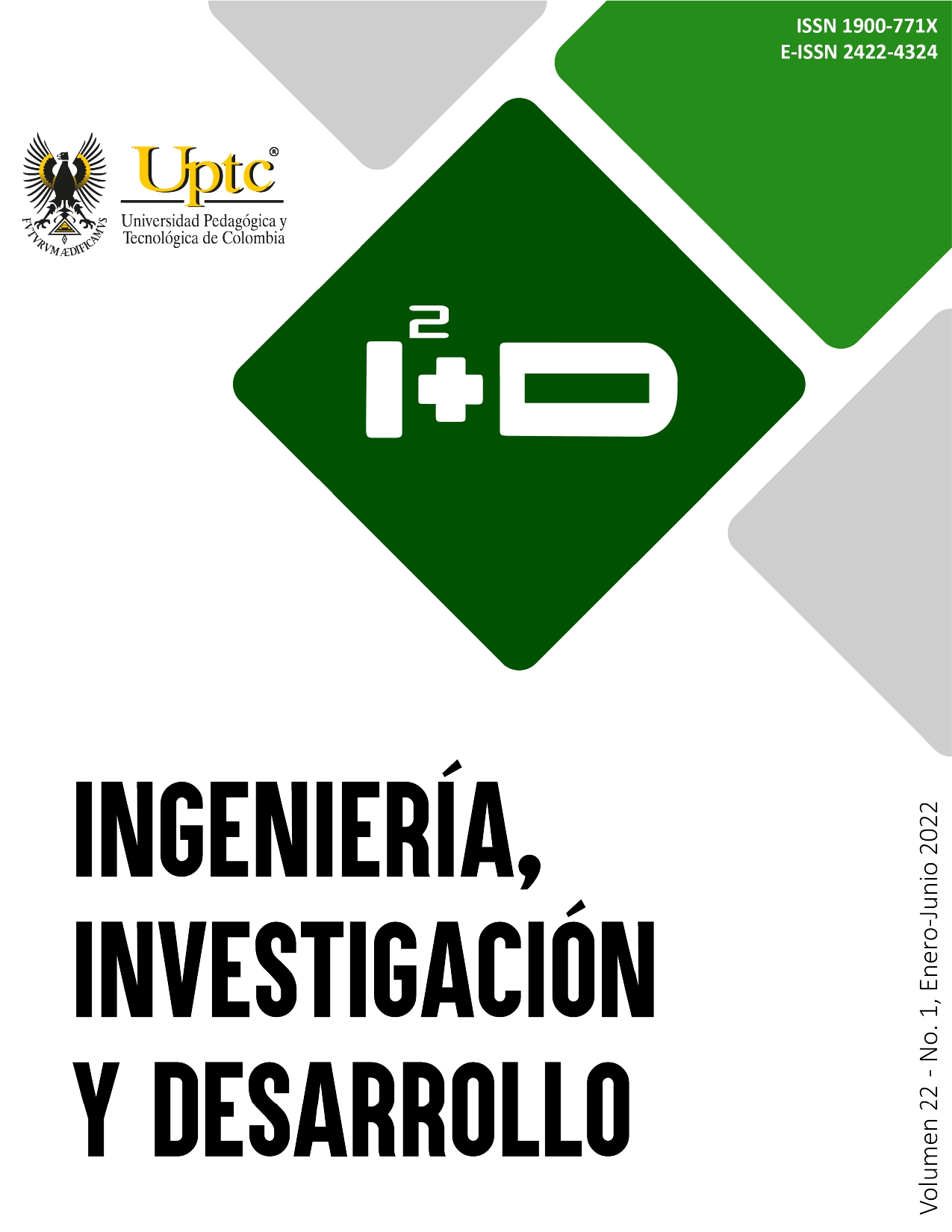Modeling of a photovoltaic system connected to the grid considering the variation of solar irradiance in Homer Pro

Abstract
In this research, the need arose to use didactic tools that allow to know the best optimization of a photovoltaic system to supply the loads of the banana company. According to the following statement, this study presents a model and simulation of a grid-connected system, considering the variation of solar irradiance. First, the pyranometer instrument was used in the area to be studied. Then, the loads of the banana plantation were considered, and then the HOMER Pro tool was used to find the best feasibility of the photovoltaic system with its optimization algorithms. For its validation, other algorithms of mathematical models made in Matlab/Simulink were used, establishing the power of the system, the levelized cost of energy (S/kWh), as well as the voltage (V), current (A) and power (W) of both the solar panel and the energy that goes to the load, moreover, the maximum power transfer point (MPPT) of the system was also determined. Finally, the payback of the modeling was evaluated to know the payback time of the system investment.
Keywords
Photovoltaic system, efficiency, renewable resources, solar irradiance, mathematical model
Author Biography
Danner Anderson Figueroa Guerra
Nació en Ricaurte, Ecuador en 1997. Recibió su título de Ingeniero Eléctrico de la Universidad Técnica Estatal de Quevedo en 2021. y su título de Master Universitario en electricidad mención sistemas eléctricos de potencia por la Universidad Técnica de Cotopaxi en 2022. Sus campos de investigación están relacionados en el Análisis de Sistemas Eléctricos de Potencia, Energías Renovables y Distribución.sión del sistema.
Javier Fernando Culqui Tipan
In this research, the need arose to use didactic tools that allow to know the best optimization of a photovoltaic system to supply the loads of the banana company. According to the following statement, this study presents a model and simulation of a grid-connected system, considering the variation of solar irradiance. First, the pyranometer instrument was used in the area to be studied. Then, the loads of the banana plantation were considered, and then the HOMER Pro tool was used to find the best feasibility of the photovoltaic system with its optimization algorithms. For its validation, other algorithms of mathematical models made in Matlab/Simulink were used, establishing the power of the system, the levelized cost of energy (S/kWh), as well as the voltage (V), current (A) and power (W) of both the solar panel and the energy that goes to the load, moreover, the maximum power transfer point (MPPT) of the system was also determined. Finally, the payback of the modeling was evaluated to know the payback time of the system investment.
Marlon Daniel Núñez Verdezoto
Nació en San José de Chimbo, Ecuador en 1992. Recibió su título de Ingeniero Electromecánico de la Universidad Técnica de Cotopaxi. y su título de Máster Universitario en Electricidad Mención Sistemas Eléctricos de Potencia por la Universidad Técnica de Cotopaxi en 2022. Sus campos de investigación están relacionados en el Análisis de Sistemas Eléctricos de Potencia, Estabilidad del SEP, Diseño y Construcción de Redes Eléctricas.
Omar Danilo Cruz Panchi
Ingeniero Electrónico e Instrumentación, título obtenido en la Escuela Superior Politécnica del Ejército ESPE-L en el año 2012. Maestría en Electricidad mención Sistemas Eléctricos de Potencia en la Universidad Técnica de Cotopaxi (UTC) en el año 2022. Campos de investigación relacionados con Sistemas Eléctricos de Potencia, Generación Eléctrica, Energías Renovables y Convencionales, Sistemas de Control Automatizado enfocado a Procesos y Generación.
References
- J. C. Pisco, Á. I. Torres and D. A. Figueroa (2020) “Diseño de un sistema híbrido aislado para abastecer una hacienda en el Cantón Quevedo Hacienda Quirola - Bananera,” 25-03-2020, p. 5.
- C. Meriem, C. Asma, M. Mohamed, S. Aicha, R. Energies, and R. Energies (2016) “Study of a photovoltaic system connected to the network and simulated by the code PVSYST,” pp. 0–4, https://doi.org/10.1109/NAWDMPV.2014.6997605 DOI: https://doi.org/10.1109/NAWDMPV.2014.6997605
- S. Mehta and P. Basak (2020) “A case study on PV assisted microgrid using HOMER pro for variation of solar irradiance affecting cost of energy,” PIICON 2020 -9th IEEE Power India Int. Conf., https://doi.org/10.1109/PIICON49524.2020.9112894 DOI: https://doi.org/10.1109/PIICON49524.2020.9112894
- W. Guapucal (2021) “ESTUDIO DE FACTIBILIDAD PARA EL SISTEMA DE GENERACIÓN FOTOVOLTAICA APLICADA A LA FUNDACIÓN ‘CHILDREN OF THE ANDES HUMANITARIAN,’” Tesis, pp. 1–114, [Online]. Disponible en: https://dspace.ups.edu.ec/handle/123456789/19840
- M. G. Mago-Ramos, L. Vallés-Defendine, J. J. Olaya-Flórez, and C. Palomino-Naranjo (2016) “Aplicación del modelo de control en espacios de estado a partir de las pérdidas totales obtenidas del porcentaje de carbono de la chapa de acero al silicio,” Iteckne, Vol. 13, no. 2, p. 127. Disponible en: http://www.scielo.org.co/scielo.php?pid=S1692-17982016000200003&script=sci_abstract&tlng=es DOI: https://doi.org/10.15332/iteckne.v13i2.1477
- H. Ramos and R. Luna (2017) “Diseño de un sistema fotovoltaico integrado a la red para el área De estacionamiento de la Universidad Tecnológica De Salamanca,” Tesis Maest., p. 101, [Online]. Available: https://cimav.repositorioinstitucional.mx/jspui/bitstream/1004/521/1/Tesis%20Rafael%20Luna%20Puente%2C%20Humberto%20Ramos%20L%C3%B3pez.pdf
- Y. Shi, Y. Sun, J. Liu, and X. Du (2021) “Model and stability analysis of grid-connected PV system considering the variation of solar irradiance and cell temperature,” Int. J. Electr. Power Energy Syst., vol. 132, November, p. 107155, https://doi.org/10.1016/j.ijepes.2021.107155 DOI: https://doi.org/10.1016/j.ijepes.2021.107155
- B. Marion (2021) “Evaluation of clear-sky and satellite-derived irradiance data for determining the degradation of photovoltaic system performance,” Sol. Energy, Vol. 223, 15 July, pp. 376–383, https://doi.org/10.1016/j.solener.2021.05.071 DOI: https://doi.org/10.1016/j.solener.2021.05.071
- T. Ma, H. Yang, and L. Lu (2014) “Solar photovoltaic system modeling and performance prediction,” Renew. Sustain. Energy Rev., Vol. 36, pp. 304–315, August. https://doi.org/10.1016/j.rser.2014.04.057 DOI: https://doi.org/10.1016/j.rser.2014.04.057
- Homer Energy, “HOMER Help Manual,” 2015. https://www.homerenergy.com/pdf/HOMER2_2.8_HelpManual.pdf
